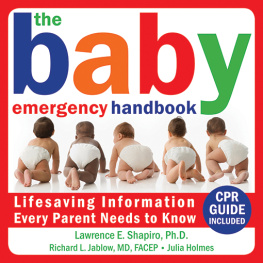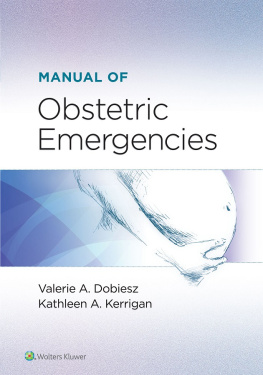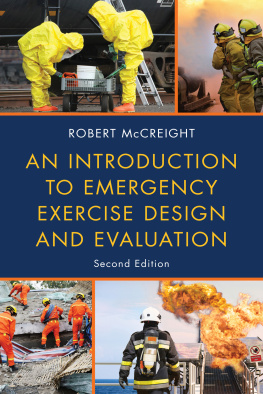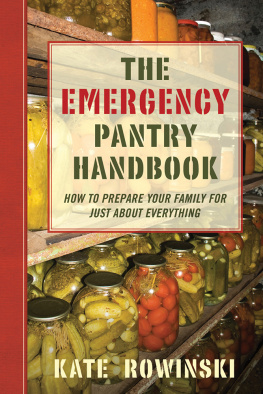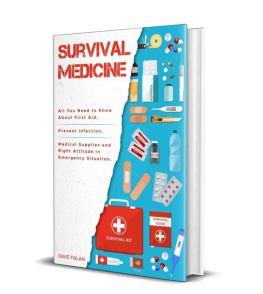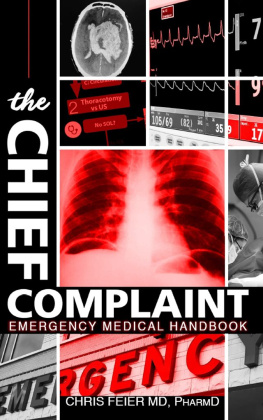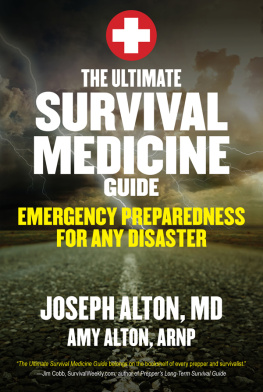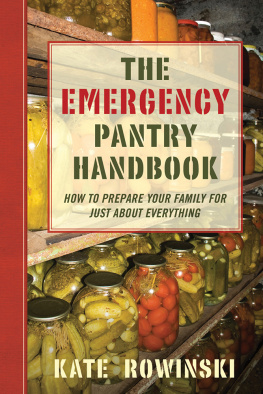Part 4
appendices
Emergency Hotlines
National Emergency Hotlines
Boys Town Suicide and Crisis Line:
800-448-3000 or 800-448-1833 (TDD)
Provides short-term crisis intervention and counseling and referrals to local community resources. Counsels on parent-child conflicts, marital and family issues, suicide, pregnancy, runaway youth, physical and sexual abuse, and other issues. Operates twenty-four hours, seven days a week.
ChildHelp USA National Child Abuse Hotline:
800-4-A-CHILD (800-422-4453) or 800.2.A.CHILD (222.4453, TDD)
Provides multilingual crisis intervention and professional counseling on child abuse. Gives referrals to local social service groups offering counseling on child abuse. Operates twenty-four hours, seven days a week.
Missing & Exploited Children Hotline
1-800-843-5678
National Domestic Violence/Child Abuse/ Sexual Abuse: 800-799-SAFE or 800-799-7233 or 800-787-3224 (TDD)
800-942-6908 Spanish Speaking
Provides crisis intervention and referrals to local services and shelters for victims of partner or spousal abuse. Operates twenty-four hours, seven days a week.
National Institute of Mental Health
1-888-ANXIETY (1-888-269-4389)
National Suicide Prevention Lifeline
1-800-273-TALK
Panic Disorder Information Hotline
800-64-PANIC
American Association of Poison Control Centers
1-800-222-1222
Your Babys Health at a Glance
Baby Medical Information
Name ____________________
Date of Birth ____________________
Pediatrician (Name and Phone) ____________________
____________________
____________________
Hospital Where Baby Was Born ____________________
Weight____________________
Known Allergies ____________________
____________________
Vaccination History ____________________
____________________
____________________
History of Illness and Medical Care ____________________
____________________
____________________
Special Medical Conditions ____________________
____________________
____________________
Personality (for example, fussy, calm, anxious, easygoing)
____________________
Parent and sibling history of medical problems
____________________
____________________
Your Personal Emergency Contacts
Name ____________________
Best Phone Number ____________________
Alternate Phone Number ____________________
Name ____________________
Best Phone Number ____________________
Alternate Phone Number ____________________
Name ____________________
Best Phone Number ____________________
Alternate Phone Number ____________________
Name ____________________
Best Phone Number ____________________
Alternate Phone Number ____________________
Name ____________________
Best Phone Number ____________________
Alternate Phone Number ____________________
Name ____________________
Best Phone Number ____________________
Alternate Phone Number ____________________
Name ____________________
Best Phone Number ____________________
Alternate Phone Number ____________________
If Your Infant Is Choking (for children under 1 year)
Caution: This guide is meant to be used as a supplement tonot a substitution fora course in CPR and child rescue. Please enroll in an approved course today. See other important cautions on page ix.
CALL 911 IMMEDIATELY IF YOUR CHILD IS CHOKING. Do nothing if your baby is coughing, breathing, or talking. Do not hold your baby upside down or shake him.
If you suspect your baby is choking on an objectif he has an ineffective cough, is unable to move air, or is turning bluedo the following:
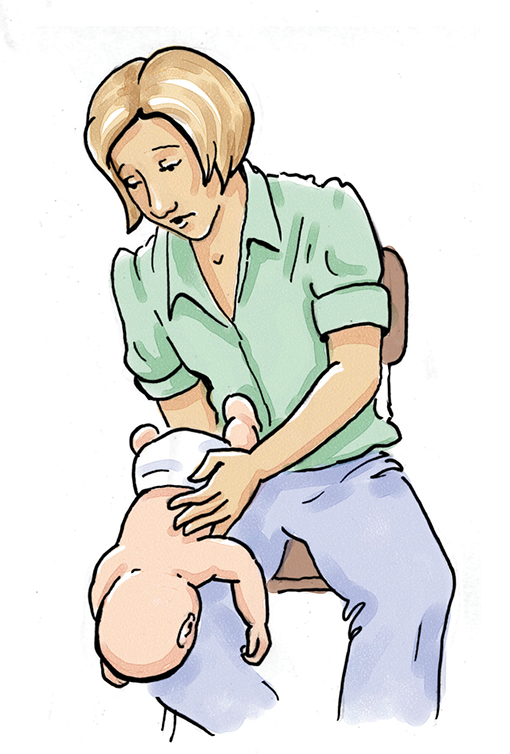
1.Hold your baby face down as shown. Support the infants head and jaw with your hands, keeping your hands away from his neck.
2.Give up to 5 firm back slaps between your babys shoulder blades with the heel of your hand. If water or vomit comes out, clear the mouth. If this does not work, go to step 3.
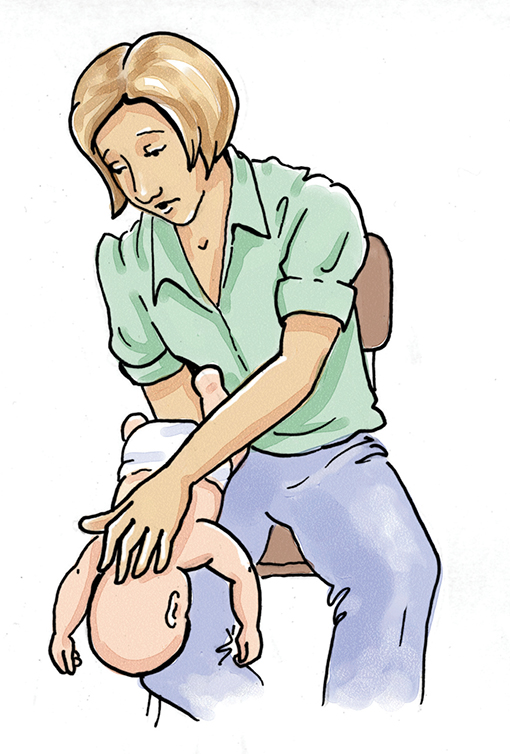
3.Turn your baby face up as shown. Support the back of his head with your hand and keep his head lower than his abdomen. Push on the chest 5 times using 2 fingers placed 1 fingers width below the nipple line. Push about once every second.
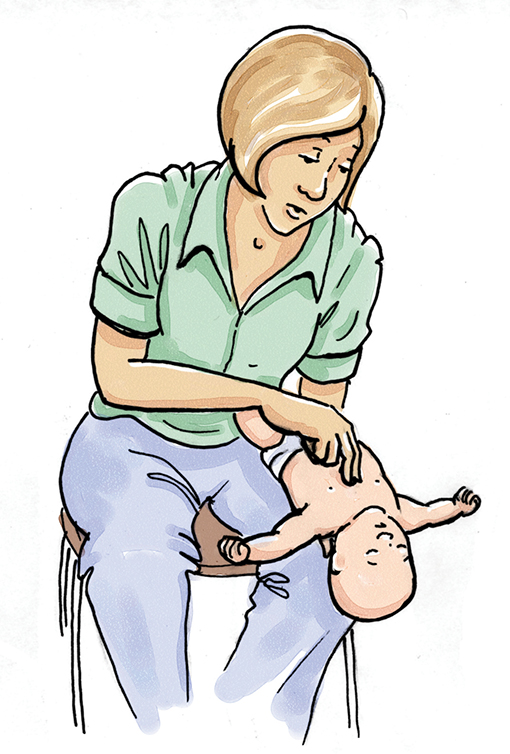
4. Repeat sets of back slaps and pushing the chest (steps 2 and 3), until the object comes out and your baby can breathe, cough, or cry.
If your child becomes unresponsive (and you cannot find a pulse), follow CPR as described on the fold-out guide and send someone to call 911. If you are alone, begin CPR for 5 cycles or 2 minutes, then call 911. After each cycle of CPR, look in the mouth, open the airway, and remove object if seen. Continue CPR until relieved by medical personnel.
If Your Child Is Choking (for children over 1 year)
Caution: This guide is meant to be used as a supplement tonot a substitution fora course in CPR and child rescue. Please enroll in an approved course today. See other important cautions on page ix.
1.Ask your child: Are you choking? If your child can speak, breathe normally, or cough, call 911, sit your child in a position of comfort, and stay with your child until the ambulance arrives.
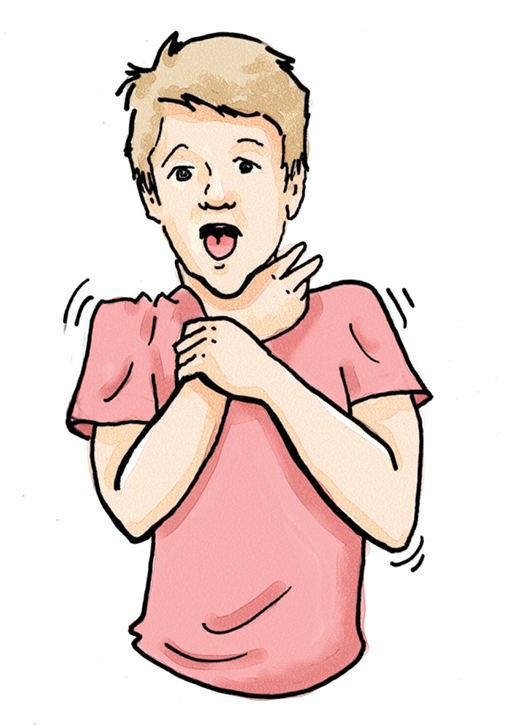
2.If he has an ineffective cough, is unable to speak or move air, has a high-pitched noise while inhaling or no noise at all, or is turning blue, your child needs intervention. Stand behind the child with your arms wrapped around his waist.
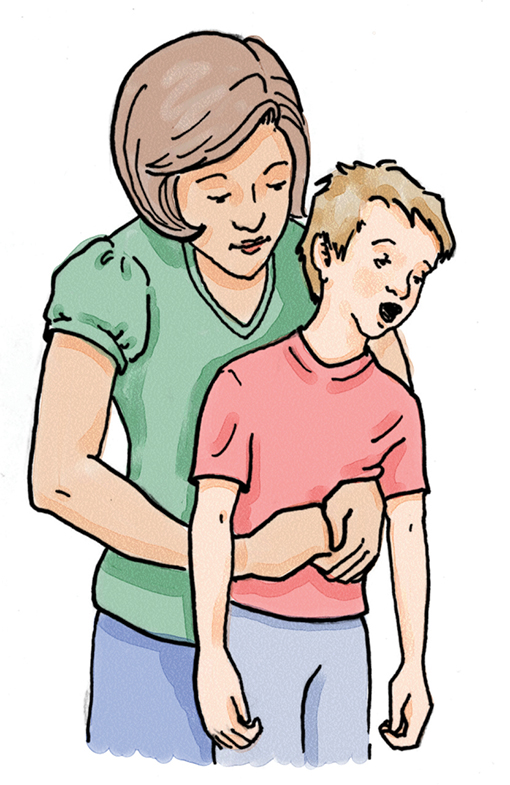
3. Make a fist, placing the thumb side against your childs abdomen, just above his belly button, and below the lower tip of his breast bone. Grab your fist with your other hand.
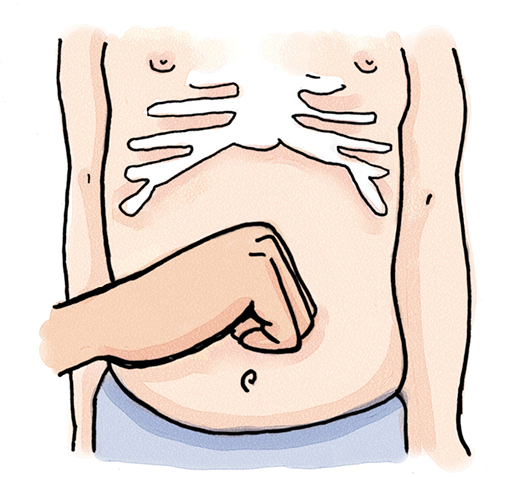
4.Pull your fist upward into your childs abdomen* with up to 5 quick, distinct thrusts. For small children, use less force. If a child is choking while on the ground, and he is responsive, you may attempt abdominal thrusts while he is on the ground. Check your child to see if the obstruction has been cleared. Each time you open the airway, look for the obstructing object in the back of the throat. Remove it if you can.
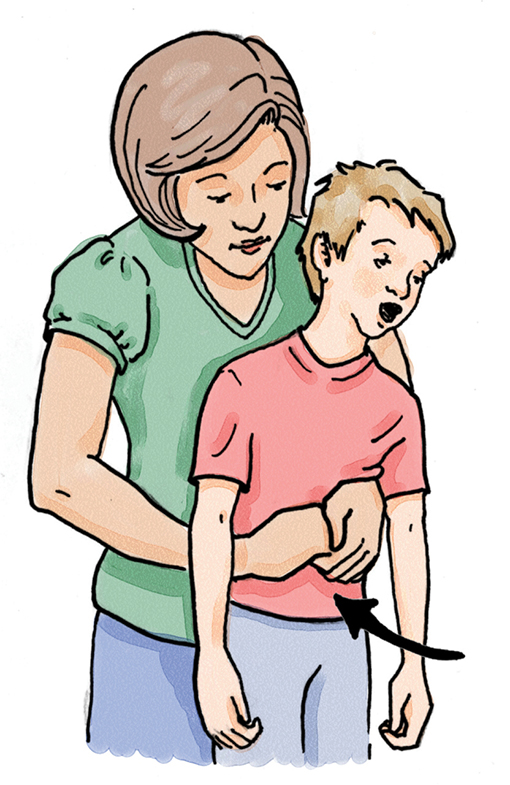
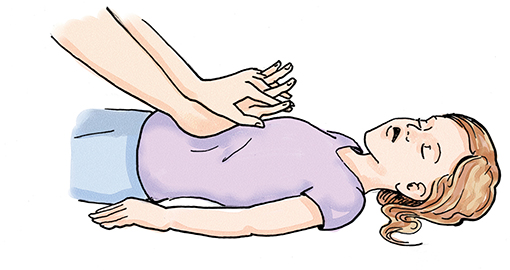
If your child stops breathing or becomes unresponsive, and you cannot find a pulse, follow CPR as described on the fold-out guide. Continue CPR until relieved by medical personnel.

